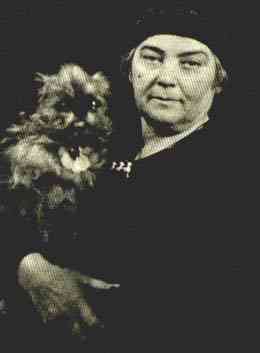Emily Carr (Emily Carr)

Artist, Author. Known as a “Canadian icon,” she was one of the first painters in Canada to adopt a modernist and post-impressionist painting style and was one of the earliest chroniclers of life in British Columbia. Her works were heavily inspired by the indigenous peoples of the Pacific Northwest Coast. She was born the send-youngest of nine children to English parents and was raised on English tradition. She did not pursue an art career seriously until after her parents’ deaths in 1891. She attended the San Francisco Art Institute in San Francisco, California from 1890 to 1892 before returning to Victoria, British Columbia. In 1898 she made the first of several sketching and painting trips to aboriginal villages, visiting Ucluelet on the west coast of Vancouver Island, home to the Nuu-chah-nulth people, then commonly known to English speaking people as ‘Nootka’. In 1899 she travelled to London where she studied at the Westminster School of Art. She also travelled to a rural art colony in St Ives, Cornwall, before returning to British Columbia in 1905. She took a teaching position in Vancouver at the ‘Ladies Art Club’ that she held for no longer than a month, as she was unpopular with her students due to her rude behavior of smoking and cursing at them in class, and the students began to boycott her courses. While visiting Alaska with her sister in 1907, she again came into contact with indigenous peoples in remote villages and used her art to document the sculptural and artistic legacy of the aboriginal people she encountered there. In 1910 she returned to Europe to study at the Academie Colarossi in Paris, France, where she met modernist painter Harry Gibb. Influenced by the post-impressionists and the fauvists she met and studied with in France, she returned to British Columbia and exhibited her French paintings. In the summer of 1912, she traveled to the Queen Charlotte Islands and the Skeena River, where she documented the art of the Haida, Gitxsan and Tsimshian indigenous peoples. Afterwards, she returned to Vancouver and organized a display of some of this work as well a providing a lecture about her visit. She did not receive a positive reaction to her work, returned to Victoria where she stopped painting, and ran a boarding house for the next 15 years. Her work over time came to the attention of several influential and supportive people, including Marius Barbeau, a prominent ethnologist at the National Museum in Ottawa, Canada, who persuaded Eric Brown, Director of Canada’s National Gallery to visit her in 1927, and Brown invited her to exhibit her work as part of an exhibition on West Coast aboriginal art at the National Gallery. It was at the exhibition on West Coast aboriginal art at the National Gallery in 1927 that she first met members of the ‘Group of Seven’ which, at that time were Canada’s most recognized modern painters. The encounter ended the artistic isolation of her previous 15 years leading to one of the most prolific period, and the creation of many of her most recognizable works. Recognition of her work grew steadily, and her work was exhibited in London, Paris, Washington DC, and Amsterdam, Netherlands, as well as major Canadian cities. In 1937 she suffered a heart attack, and another in 1939, and in 1940 Carr suffered a serious stroke, followed by another heart attack in 1942. With her ability to travel curtailed, her focus shifted from her painting to her writing. Her first book, “Klee Wyck,” was published in 1941 and was honored with the Governor-General’s Award for non-fiction the following year. She followed this work with “The Book of Small” (1942), “The House of All Sorts” (1944), and, published posthumously, “Growing Pains” (1946), “Pause, The Heart of a Peacock” (1953), and” Hundreds and Thousands” (1966). She died of a heart attack in Victoria, British Columbia, shortly before she was to have been awarded an honorary doctorate by the University of British Columbia. (bio by: William Bjornstad) Family links: Parents: Richard H Carr (1818 – 1888) Emily Saunders Carr (1836 – 1886) Siblings: Edith Carr (1856 – 1919)* Clara Louisa Carr Nicholles (1857 – 1919)* William Carr (1861 – 1861)* John Carr (1862 – 1862)* Thomas Carr (1865 – 1865)* Elizabeth Emily Carr (1867 – 1936)* Alice Mary Carr (1869 – 1953)* Emily Carr (1871 – 1945) Richard Henry Carr (1875 – 1899)* *Calculated relationship
Born
- December, 13, 1871
- Canada
Died
- March, 03, 1945
- Canada
Cemetery
- Ross Bay Cemetery
- Canada

